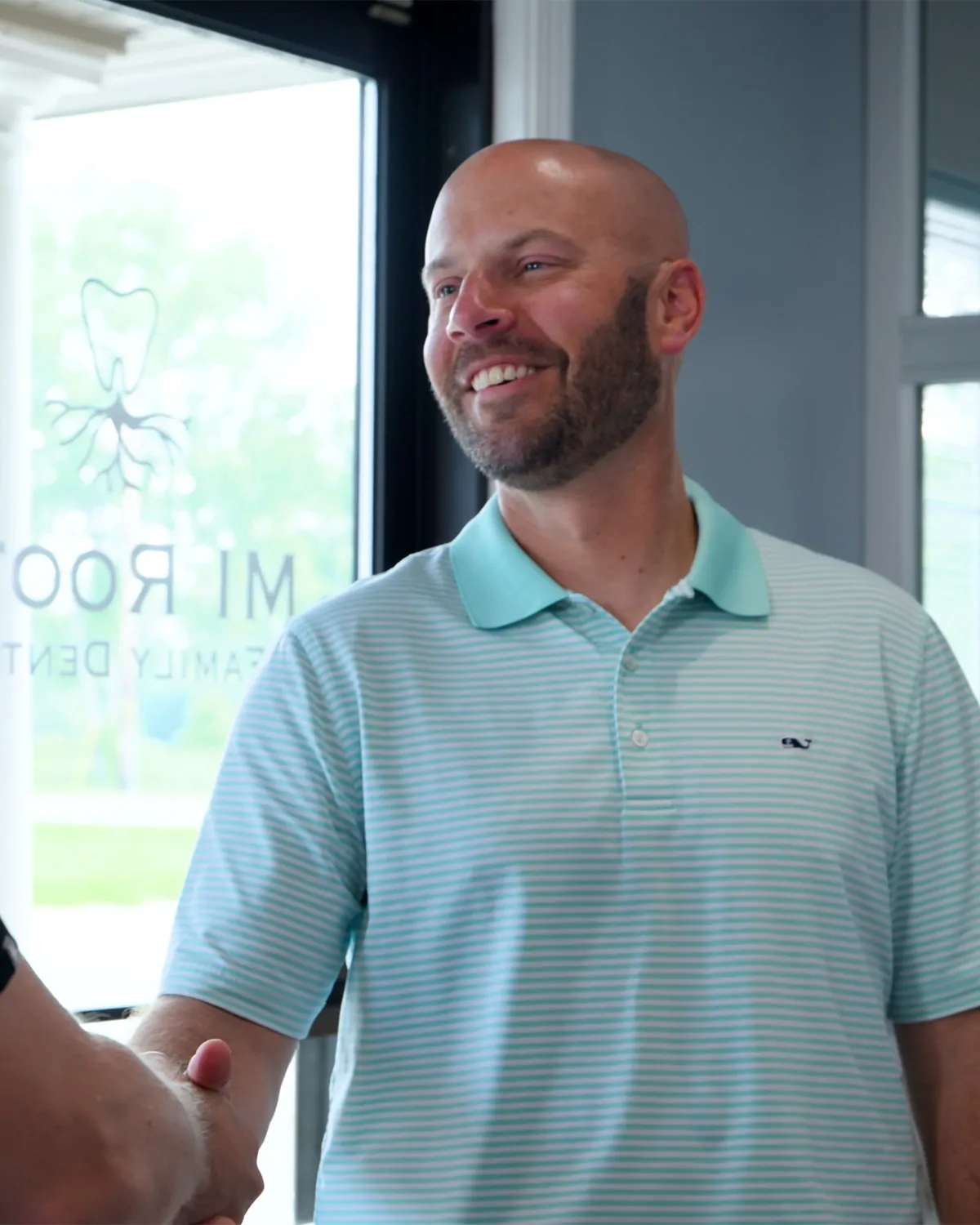Healthy gums are the foundation of a strong smile. If you have signs of gum disease, our Grand Rapids dentist offers non-surgical treatments like to gently remove bacteria and promote healing. Ultimately, the condition of your gum tissue will influence the type of personalized care and preventive strategies we prescribe. Antibiotic rinses may also be recommended as part of your treatment.
Learn more about how gum disease treatment can greatly improve your smile below.

Common Gum Disease Symptoms
Also known as periodontal disease, gum disease often develops gradually, making it important to recognize the warning signs early. The condition begins with gingivitis, which is the mild and reversible form of gum disease. Without treatment, gingivitis can progress to periodontitis, which can range from mild to severe and lead to long-term damage, including tooth loss.
Some common indicators of gum disease include:
- Red, swollen, or tender gums
- Bleeding gums
- Persistent bad breath
- Gum recession
- Loose or shifting teeth
- Pain when chewing
- Pus between gums and teeth
The good news is that gingivitis can be reversed with proper care and professional treatment. However, periodontitis requires more advanced interventions to prevent further damage. The sooner the condition is diagnosed and periodontal therapy is implemented, the better the chances are of preserving your natural teeth and maintaining optimal oral health.
Goal of Gum Disease Treatments
The primary goal of treatments for gum disease is to restore gum health and prevent further deterioration of the supporting structures around your teeth. More specifically, these treatments aim to:
- Promote healthy reattachment of gums to teeth by removing infection and encouraging tissue regeneration.
- Clean out periodontal pockets that have formed between the gums and teeth to eliminate bacteria and prevent further progression.
- Reduce inflammation and swelling to create a healthier oral environment.
- Remove dental plaque and tartar buildup that contribute to gum disease.
- Rebuild lost bone using dental bone grafting to provide support to the affected area.

